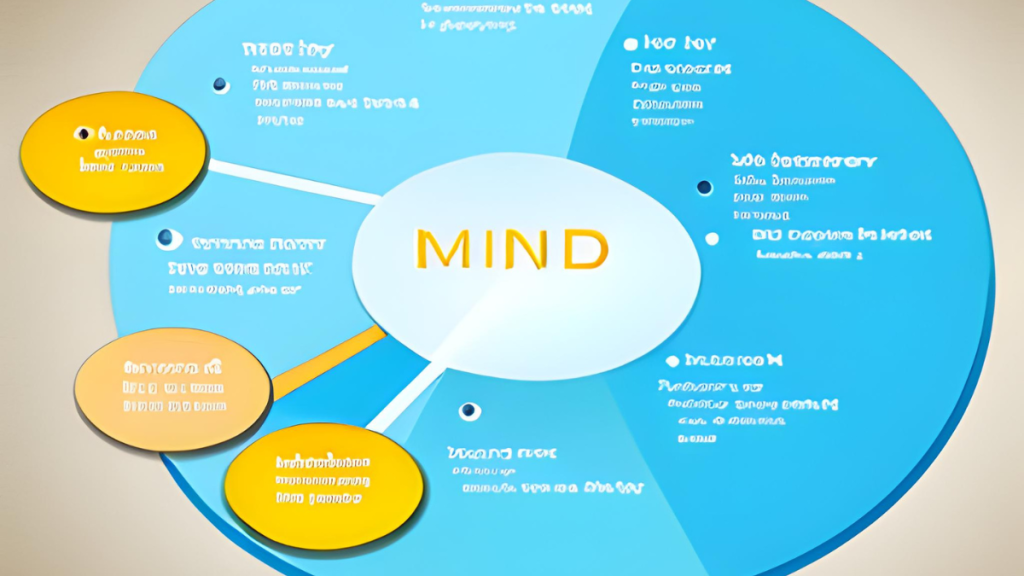MAPAS MENTALES (MINDMAPS) PARA EL APRENDIZAJE DE EMPRENDEDORES
Acelera tu empresa con estos consejos «Mapas mentales (Mindmaps) para el aprendizaje de emprendedores». ¡Analiza y descubre esta TIP!
Mindmaps que nos ayudan a estructurar la información del tema que queremos aprender, y en este caso la inteligencia artificial (ver+ TIP) nos puede generar el código para posteriormente incrustar en nuestra herramienta online de mapas mentales preferida
Un mindmap, también conocido como, mapa mental o mapa de ideas, es una representación visual de ideas y conceptos interconectados. Se utiliza como una herramienta para organizar información de manera clara y estructurada, fomentando la creatividad, la comprensión y la generación de nuevas ideas.
En un mindmap, se utiliza un formato de diagrama radial, donde el tema principal o la idea central se coloca en el centro del mapa, y a partir de ahí se van ramificando las ideas secundarias y subtemas relacionados. Las ramas se extienden en diferentes direcciones, creando una estructura jerárquica que muestra las relaciones y conexiones entre los diferentes conceptos.
El uso de colores, palabras clave, imágenes y símbolos ayuda a visualizar y organizar la información de manera más efectiva. Además, los mindmaps permiten añadir notas, comentarios y enlaces a recursos adicionales, lo que facilita el repaso y la ampliación de los conceptos representados.
Los mindmaps se utilizan en diversas áreas, como la educación, la planificación de proyectos, la resolución de problemas, la toma de decisiones, la generación de ideas y la organización de información compleja. Son una herramienta versátil y flexible que ayuda a estimular la creatividad, la comprensión y la retención de información.
Un emprendedor puede utilizar los mindmaps de varias formas para impulsar su negocio y mejorar su proceso de toma de decisiones.
A continuación, te presento algunas formas en las que los emprendedores pueden aprovechar los mindmaps
- Generación de ideas: Los mindmaps son ideales para la generación de ideas. Puedes utilizarlos para explorar diferentes conceptos, desarrollar nuevas soluciones y visualizar las relaciones entre las ideas. Al colocar la idea principal en el centro del mindmap, puedes ramificarla en ideas secundarias y subtemas, lo que te ayudará a generar ideas de manera más creativa y organizada.
- Planificación de proyectos: Los mindmaps son una herramienta efectiva para planificar proyectos. Puedes utilizarlos para desglosar los objetivos del proyecto, identificar las tareas clave, asignar responsabilidades, establecer plazos y visualizar la secuencia de actividades. Los mindmaps te permiten tener una visión general del proyecto y te ayudan a mantener un seguimiento claro de todas las etapas y componentes del mismo.
- Organización de información: Los mindmaps son útiles para organizar información compleja. Puedes utilizarlos para capturar y organizar ideas, datos, notas y enlaces a recursos relevantes. Los mindmaps te permiten tener una representación visual de la información, lo que facilita la comprensión y la recuperación de los datos cuando los necesites.
- Toma de decisiones: Los mindmaps pueden ser una herramienta poderosa para la toma de decisiones. Puedes utilizarlos para analizar diferentes opciones, evaluar los pros y contras de cada una, identificar las implicaciones y visualizar las conexiones entre las diferentes variables. Los mindmaps te ayudan a organizar tus pensamientos de manera estructurada y a tomar decisiones más informadas.
- Planificación estratégica: Los mindmaps son útiles para la planificación estratégica de tu negocio. Puedes utilizarlos para definir la visión y misión de tu empresa, establecer los objetivos a largo plazo, identificar las estrategias clave y visualizar las interconexiones entre los diferentes elementos de tu plan estratégico. Los mindmaps te permiten tener una representación visual de tu estrategia, lo que facilita la comunicación y el seguimiento de tus objetivos.
En resumen, los mindmaps son una herramienta versátil que los emprendedores pueden utilizar para la generación de ideas, la planificación de proyectos, la organización de información, la toma de decisiones y la planificación estratégica. Su enfoque visual y jerárquico ayuda a estimular la creatividad, mejorar la comprensión y facilitar la comunicación de ideas complejas.
Aquí tienes algunos ejemplos prácticos de cómo un emprendedor puede utilizar los mindmaps:
GENERACIÓN DE IDEAS PARA UN NUEVO PRODUCTO:
- Coloca el nombre del producto en el centro del mindmap.
- Crea ramas para características clave, como funcionalidades, diseño y precio.
- Desglosa cada rama en ideas más detalladas, como especificaciones técnicas, opciones de diseño y estrategias de fijación de precios.
- Explora diferentes opciones y evalúa sus pros y contras.
- Utiliza el mindmap como base para desarrollar un plan de acción.
PLANIFICACIÓN DE UN LANZAMIENTO DE NEGOCIO:
- Coloca el objetivo principal del lanzamiento en el centro del mindmap.
- Crea ramas para diferentes áreas clave, como marketing, ventas, operaciones y recursos humanos.
- Desglosa cada rama en tareas específicas, como estrategias de marketing, identificación de clientes objetivo y contratación de personal.
- Establece plazos y asigna responsabilidades a cada tarea.
- Utiliza el mindmap como una guía visual para asegurarte de que todos los aspectos importantes estén cubiertos.
ORGANIZACIÓN DE IDEAS APRA UN PLAN DE MARKETING:
- Coloca el objetivo de marketing en el centro del mindmap.
- Crea ramas para diferentes estrategias de marketing, como publicidad, relaciones públicas y marketing digital.
- Desglosa cada rama en acciones y tácticas específicas, como creación de contenido, participación en eventos y campañas de email marketing.
- Identifica recursos necesarios y establece un presupuesto para cada estrategia.
- Utiliza el mindmap como referencia para seguir y ajustar tu plan de marketing.
TOMA DE DECISIONES SOBRE LA EXPANSIÓN DEL NEGOCIO:
- Coloca la opción de expansión en el centro del mindmap.
- Crea ramas para diferentes enfoques de expansión, como abrir nuevas ubicaciones o ingresar a nuevos mercados.
- Desglosa cada rama en factores clave, como análisis de mercado, requisitos legales y financieros, y análisis de competidores.
- Evalúa las ventajas y desventajas de cada enfoque de expansión.
- Utiliza el mindmap para visualizar las implicaciones y tomar una decisión informada.
Estos ejemplos ilustran cómo un emprendedor puede utilizar los mindmaps en diferentes escenarios empresariales. Recuerda que los mindmaps son herramientas flexibles y puedes adaptarlos según tus necesidades específicas. Experimenta con diferentes enfoques y descubre cómo los mindmaps pueden ayudarte en tu proceso de toma de decisiones y planificación empresarial.
Como emprendedor, puedes aprovechar la inteligencia artificial para obtener ayuda en la generación de contenido y posteriormente utilizarlo en tus mindmaps.
Aquí hay una explicación amplia de cómo puedes hacerlo:
- Definir el tema y recopilar información: Antes de comenzar, debes tener claro el tema sobre el cual deseas crear un mindmap. Identifica los puntos clave que deseas abordar y recopila información relevante sobre el tema.
- Interactuar con la inteligencia artificial: Inicia una conversación con la inteligencia artificial y proporciona una descripción clara de lo que deseas incluir en tu mindmap. Puedes plantear preguntas específicas o solicitar una explicación más amplia sobre un tema en particular. Por ejemplo, podrías preguntar: «¿Cuáles son los beneficios del marketing digital para las pequeñas empresas?» o «Explícame los diferentes métodos de financiamiento disponibles para los emprendedores».
- Obtener información estructurada: te proporcionará respuestas basadas en su conocimiento previo. Analiza las respuestas y extrae los puntos clave y la información relevante que desees incluir en tu mindmap. Puedes utilizar herramientas de resaltado o tomar notas para organizar la información proporcionada.
- Generar un código para el mindmap: Una vez que hayas recopilado la información necesaria, puedes utilizar la inteligencia artificial para generar el código necesario para crear tu mindmap. Proporciona una descripción clara de cómo deseas que se visualice la información y solicita a la inteligencia artificial que genere el código en consecuencia. Por ejemplo, podrías pedir: «Genera el código para un mindmap que muestre las diferentes estrategias de marketing digital para emprendedores».
- Integrar el código en tu herramienta de mindmaps preferida: Copia el código generado por la inteligencia artificial y pégalo en tu herramienta de mindmaps en línea favorita. Esta herramienta te permitirá visualizar la información en forma de un mindmap interactivo y podrás organizar y conectar los diferentes puntos clave.
Al utilizar la inteligencia artificial de esta manera, puedes aprovechar su conocimiento y capacidad de generación de contenido para obtener información relevante y estructurada que luego puedes incorporar en tus mindmaps. Esto te ayudará a organizar y visualizar la información de manera clara y concisa, lo que facilitará tu proceso de aprendizaje y comprensión del tema en cuestión.
Es importante tener en cuenta que, si bien puede proporcionar información útil, siempre es recomendable verificar y complementar la información obtenida con fuentes adicionales confiables. La inteligencia artificial es un modelo de lenguaje basado en datos previos y no tiene conocimiento en tiempo real de los cambios o actualizaciones más recientes en un tema determinado.
EJEMPLO PRÁCTICO DE CÓMO UN EMPRENDEDOR PODRÍA UTILIZAR LA INTELIGENCIA ARTIFICIAL EN LA CREACIÓN DE UN MINDMAP
- Definir el tema: Imagina que eres un emprendedor que está interesado en aprender sobre las diferentes estrategias de marketing digital para promocionar un nuevo producto o servicio.
- Interacción con la inteligencia artificial: Inicias una conversación con la inteligencia artificial y le planteas la siguiente pregunta: «¿Cuáles son algunas estrategias efectivas de marketing digital para promocionar un nuevo producto o servicio?».
- Obtener información estructurada: te proporciona una respuesta que incluye diferentes estrategias de marketing digital, como el uso de redes sociales, marketing de contenidos, publicidad en línea y colaboraciones con influencers. Analizas la respuesta y extraes los puntos clave de cada estrategia.
- Generar el código para el mindmap: A continuación, solicitas a la inteligencia artificial que genere el código necesario para crear el mindmap. Le proporcionas una descripción clara de cómo deseas visualizar la información y solicitas el código. Por ejemplo, podrías pedir: «Genera el código para un mindmap que muestre las diferentes estrategias de marketing digital como ramas conectadas al tema principal ‘Promoción de un nuevo producto'».
- Integrar el código en tu herramienta de mindmaps preferida: Copias el código generado por la inteligencia artificial y lo pegas en tu herramienta de mindmaps en línea favorita. La herramienta creará un mindmap interactivo con las diferentes estrategias de marketing digital como ramas conectadas al tema principal.
Con este ejemplo, puedes ver cómo la inteligencia artificial te ayuda a obtener información estructurada sobre las estrategias de marketing digital y genera el código necesario para crear un mindmap visualmente atractivo. Este mindmap te ayudará a tener una visión clara de las diferentes estrategias disponibles y cómo se relacionan con la promoción de tu producto o servicio.
Recuerda que este es solo un ejemplo y que puedes adaptarlo según tus propios intereses y necesidades empresariales.
Existen varias herramientas de mindmap disponibles en el mercado, y la elección dependerá de tus preferencias personales y necesidades específicas.
A CONTINUACIÓN, TE MENCIONO ALGUNAS OPCIONES POPULARES:
MINDMEISTER
- Precio: Ofrece diferentes planes de precios, desde una versión gratuita hasta planes de pago que van desde $4.99 al mes hasta $12.49 al mes.
- Enlace: Puedes encontrar más información y darte de alta en su sitio web oficial (ver+).
XMIND
- Precio: Ofrece una versión gratuita con características limitadas y planes de pago que van desde $2.49 al mes hasta $9.99 al mes.
- Enlace: Puedes obtener más detalles y registrarte en su página web (ver+).
COOGLE
- Precio: Ofrece una versión gratuita con características básicas y un plan de pago de $5 al mes por usuario.
- Enlace: Para obtener más información y registrarte, visita su sitio web (ver+).
MINDOMO
- Precio: Tiene una versión gratuita con funciones limitadas y planes de pago que van desde $6 al mes hasta $15 al mes.
- Enlace: Puedes explorar sus planes y registrarte en su página web (ver+).
Recuerda que estos precios y planes pueden cambiar con el tiempo, por lo que te recomiendo visitar los sitios web de cada herramienta para obtener la información más actualizada sobre precios y características.
Además de estas opciones, también puedes considerar otras herramientas populares como iMindMap, Lucidchart, FreeMind y muchos más. Te sugiero investigar cada una de ellas y probar las versiones gratuitas o las pruebas gratuitas que ofrecen para determinar cuál se ajusta mejor a tus necesidades y preferencias personales.
APLICA ESTE TIP EN TU PROYECTO
QUIZ
- 💻 PRACTICA con un experto en el próximo webinar práctico.
- 🔎 CONSULTA más TIPs relacionadas con este mismo tema.
- 📖 AMPLIA tus conocimientos descargando este EBOOK.
PIENSA EN TI
- 🚀 IMPULSA tu empresa en el próximo programa de aceleración, ¡reserva tu plaza ya!
- 🥁 PRACTICA con tu proyecto en este webinar práctico, ¡solicita tu plaza!.
- 🌐 CONTACTA con otros emprendedores y empresas, ¡inscríbete y participa en el próximo Networking!
PIENSA EN AYUDAR A LOS DEMÁS
- 🤝COLABORA como voluntario: experto, mentor, inversor, premiando, difundiendo, retando, innovando, creando una TIP…
- 💬 RECOMIENDA este programa para que llegue a más emprendedores por Google.
- 👉 ¡COMPARTE tu aprendizaje!
- 📲 REENVÍA esta TIP 👇








